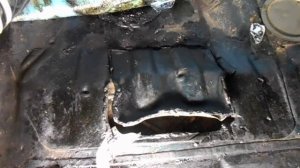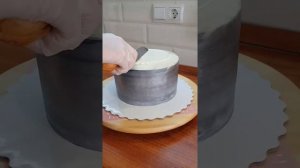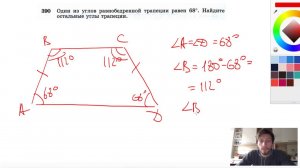
 2:30
2:30
2024-04-20 16:44

 19:59
19:59

 19:59
19:59
2024-02-04 01:10

 1:27:47
1:27:47

 1:27:47
1:27:47
2024-04-08 01:30

 3:51
3:51

 3:51
3:51
2024-05-11 04:07

 5:27
5:27

 5:27
5:27
2023-11-08 01:48

 0:33
0:33

 0:33
0:33
2023-11-18 00:13

 0:58
0:58

 0:58
0:58
2023-11-16 10:53

 2:45
2:45

 2:45
2:45
2024-01-01 17:31

 1:23
1:23

 1:23
1:23
2023-12-20 15:34

 8:44
8:44

 8:44
8:44
2024-04-02 00:57

 22:49
22:49

 22:49
22:49
2025-09-19 15:58

 1:45
1:45

 1:45
1:45
2023-07-04 20:15

 0:44
0:44

 0:44
0:44
2023-08-10 15:08

 1:05
1:05

 1:05
1:05
2019-09-25 12:08

 18:45
18:45

 18:45
18:45
2022-12-19 14:13

 39:46
39:46

 39:46
39:46
2025-09-20 18:00

 4:59
4:59

 4:59
4:59
2025-09-21 19:07

 15:38
15:38
![Анвар Нишонов - Тулкилар (Премьера клипа 2025)]() 3:38
3:38
![Ислам Итляшев - Скандал (Премьера клипа 2025)]() 2:08
2:08
![Курбан Ожахлиев - Топи (Премьера клипа 2025)]() 2:52
2:52
![Рейсан Магомедкеримов - Забываю (Премьера клипа 2025)]() 3:20
3:20
![KINO - DIRTY BOY (Feat. JAMIE, UWA)]() 3:22
3:22
![Эльдар Долаев - Ранила (Премьера клипа 2025)]() 3:02
3:02
![Женя Белоусова - Кто тебе сказал (Премьера клипа 2025)]() 3:27
3:27
![Динара Швец - Новая история (Премьера клипа 2025)]() 3:45
3:45
![W24 - I Gotta Feeling]() 3:49
3:49
![Александра Воробьева - Ход королевы (Премьера клипа 2025)]() 3:32
3:32
![Anette - Erjanik em (Official Video 2025)]() 3:36
3:36
![ИЮЛА - Ты был прав (Премьера клипа 2025)]() 2:21
2:21
![Фати Царикаева - Стамбул (Премьера клипа 2025)]() 2:57
2:57
![Фаррух Хамраев - Отажоним булсайди (Премьера клипа 2025)]() 3:08
3:08
![МАРАТ & АРНИ - Стала женой (Премьера клипа 2025)]() 3:51
3:51
![Рустам Батербиев - Пора расстаться (Премьера клипа 2025)]() 2:38
2:38
![UMARO, Сангин - Брат мой (Премьера клипа 2025)]() 3:16
3:16
![Олег Семенов - Бархатный сезон (Премьера клипа 2025)]() 3:51
3:51
![Ольга Сокурова, Ислам и Карина Киш – СИ ГУГЪАПlЭ (Премьера клипа 2025)]() 3:20
3:20
![Gazan, Бабек Мамедрзаев - Танцуй моя королева (Премьера клипа 2025)]() 2:29
2:29
![Doom (2005) (Расширенная версия)]() 1:52:44
1:52:44
![Первый день моей жизни]() 1:56:45
1:56:45
![Чумовая пятница (2003)]() 1:36:57
1:36:57
![Посредники]() 2:04:01
2:04:01
![Порочный круг | Vicious (2025)]() 1:42:30
1:42:30
![Монстры: История Эда Гейна (2025) (мини-сериал)]() 7:26:60
7:26:60
![Шафер напрокат (2015)]() 1:41:27
1:41:27
![Школьный автобус | The Lost Bus (2025)]() 2:09:55
2:09:55
![Плохой Cанта 2 | Bad Santa 2 (2016) (Гоблин)]() 1:28:32
1:28:32
![Сирены (2025) Netflix]() 4:26:06
4:26:06
![Стив | Steve (2025)]() 1:33:34
1:33:34
![Последний клиент]() 1:33:23
1:33:23
![Ниже нуля (2021) Netflix]() 1:46:35
1:46:35
![Чумовая пятница 2 | Freakier Friday (2025)]() 1:50:38
1:50:38
![Тот самый | Him (2025)]() 1:36:20
1:36:20
![Легенды: Гробница дракона (2013)]() 1:32:30
1:32:30
![Гонка (2013) 1080]() 1:37:04
1:37:04
![Рыжая Соня (2025)]() 1:50:40
1:50:40
![Кровь искупления (2013) 1080]() 1:25:11
1:25:11
![Хищник | Predator (1987) (Гоблин)]() 1:46:40
1:46:40
![Земля до начала времён 13: Сила дружбы (2007) / The Land Before Time XIII]()
 1:15:39
1:15:39
![Смурфики в кино (2025) / Smurfs]()
 1:29:33
1:29:33
![Альфа и Омега 2: Приключения праздничного воя (2013) / Alpha and Omega 2: A Howl-iday Adventure]()
 45:08
45:08
![Дорога домой (2021) / Back to the Outback]()
 1:31:40
1:31:40
![Эти прекрасные мультяшки: Рождественский выпуск (1992) / It's a Wonderful Christmas Special]()
 22:22
22:22
![ЛЕГО Манки Кид: Рождение героя (2020) / Lego Monkie Kid: A Hero Is Born]()
 45:00
45:00
![Гномео и Джульетта (2011) / Gnomeo & Juliet]()
 1:23:51
1:23:51
![Странные чары (2015) / Strange Magic]()
 1:39:20
1:39:20
![Ночная жуть Тайни Тун (1995) / Tiny Toon Night Ghoulery]()
 43:38
43:38
![Земля до начала времён 12: Великий День птиц (2006) / The Land Before Time XII]()
 1:20:30
1:20:30
![Приключения Десперо (2008) / The Tale of Despereaux]()
 1:33:38
1:33:38
![Альфа и Омега 3: Большие Волчьи Игры (2013) / Alpha and Omega 3: The Great Wolf Games]()
 45:01
45:01
![Шерлок Гномс (2018) / Sherlock Gnomes]()
 1:26:19
1:26:19
![Смурфики (2011) / The Smurfs]()
 1:42:44
1:42:44
![Плохие парни 2 (2025) / The Bad Guys 2]()
 1:43:47
1:43:47
![Земля до начала времён 2: Приключения в Великой Долине (1994) / The Land Before Time II]()
 1:13:31
1:13:31
![Земля до начала времён 5: Таинственный остров (1997) / The Land Before Time V]()
 1:13:30
1:13:30
![Иллюзионист (2010) / L'illusionniste]()
 1:19:53
1:19:53
![Волшебный парк Джун (2019) / Wonder Park]()
 1:25:17
1:25:17
![Земля до начала времён 3: В поисках воды (1995) / The Land Before Time III]()
 1:10:48
1:10:48

 15:38
15:38Скачать видео
| 256x142 | ||
| 640x358 | ||
| 854x476 |
 3:38
3:38
2025-10-11 12:45
 2:08
2:08
2025-10-14 10:40
 2:52
2:52
2025-10-11 12:23
 3:20
3:20
2025-10-16 11:19
2025-10-13 16:08
 3:02
3:02
2025-10-10 12:56
 3:27
3:27
2025-10-16 11:15
 3:45
3:45
2025-10-15 10:45
2025-10-12 18:28
 3:32
3:32
2025-10-11 12:12
 3:36
3:36
2025-10-18 10:11
 2:21
2:21
2025-10-18 10:16
 2:57
2:57
2025-10-15 10:54
 3:08
3:08
2025-10-18 10:28
 3:51
3:51
2025-10-16 11:41
 2:38
2:38
2025-10-16 11:06
 3:16
3:16
2025-10-10 13:04
 3:51
3:51
2025-10-16 10:57
 3:20
3:20
2025-10-15 10:27
 2:29
2:29
2025-10-11 12:10
0/0
 1:52:44
1:52:44
2025-10-09 20:16
 1:56:45
1:56:45
2025-10-13 11:38
 1:36:57
1:36:57
2025-10-05 17:21
 2:04:01
2:04:01
2025-10-13 11:37
 1:42:30
1:42:30
2025-10-14 20:27
 7:26:60
7:26:60
2025-10-05 20:29
 1:41:27
1:41:27
2025-10-14 22:27
 2:09:55
2:09:55
2025-10-05 00:32
 1:28:32
1:28:32
2025-10-07 09:27
 4:26:06
4:26:06
2025-10-12 20:27
 1:33:34
1:33:34
2025-10-08 12:27
 1:33:23
1:33:23
2025-10-13 11:36
 1:46:35
1:46:35
2025-10-14 21:34
 1:50:38
1:50:38
2025-10-16 16:08
 1:36:20
1:36:20
2025-10-09 20:02
2025-10-10 08:28
2025-10-05 17:38
 1:50:40
1:50:40
2025-10-15 14:11
2025-10-08 15:51
 1:46:40
1:46:40
2025-10-07 09:27
0/0

 1:15:39
1:15:39
2025-10-06 18:00

 1:29:33
1:29:33
2025-09-29 18:00

 45:08
45:08
2025-10-08 18:00

 1:31:40
1:31:40
2025-09-12 18:00

 22:22
22:22
2025-09-11 18:00

 45:00
45:00
2025-10-07 18:00

 1:23:51
1:23:51
2025-09-10 18:00

 1:39:20
1:39:20
2025-10-13 18:00

 43:38
43:38
2025-09-09 18:00

 1:20:30
1:20:30
2025-10-04 18:00

 1:33:38
1:33:38
2025-10-09 18:00

 45:01
45:01
2025-10-10 18:00

 1:26:19
1:26:19
2025-09-25 18:00

 1:42:44
1:42:44
2025-09-27 18:00

 1:43:47
1:43:47
2025-09-23 18:00

 1:13:31
1:13:31
2025-09-13 18:00

 1:13:30
1:13:30
2025-09-20 18:00

 1:19:53
1:19:53
2025-10-11 18:00

 1:25:17
1:25:17
2025-09-08 18:00

 1:10:48
1:10:48
2025-09-15 18:00
0/0

